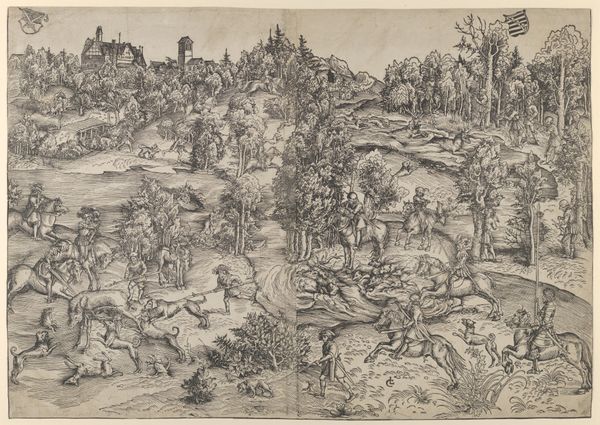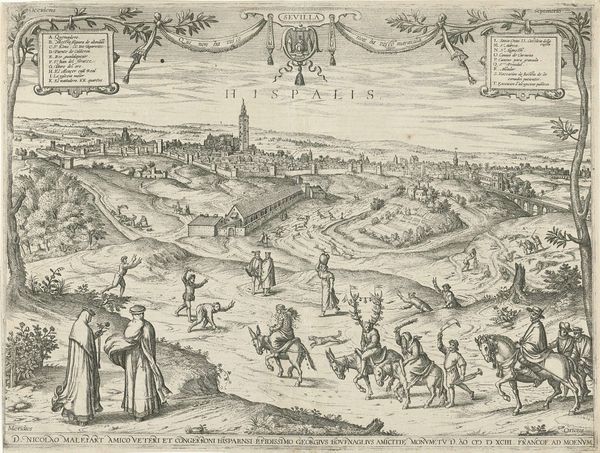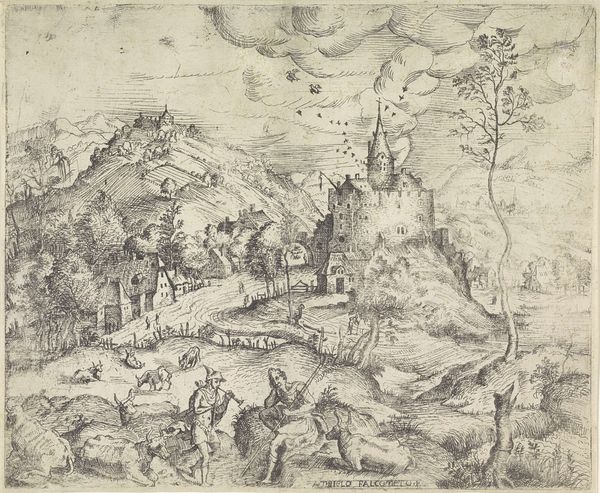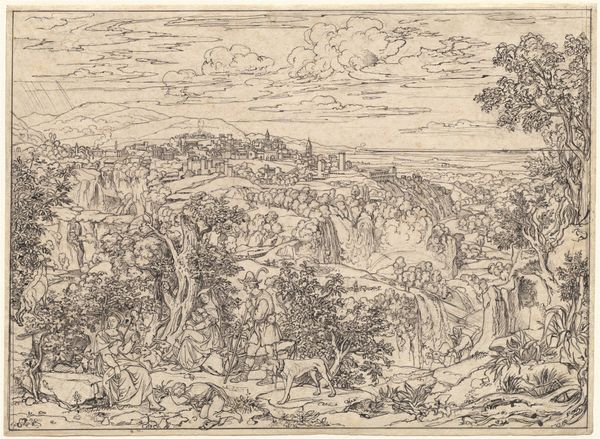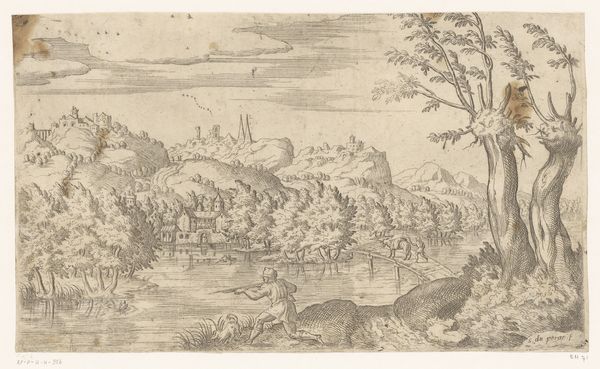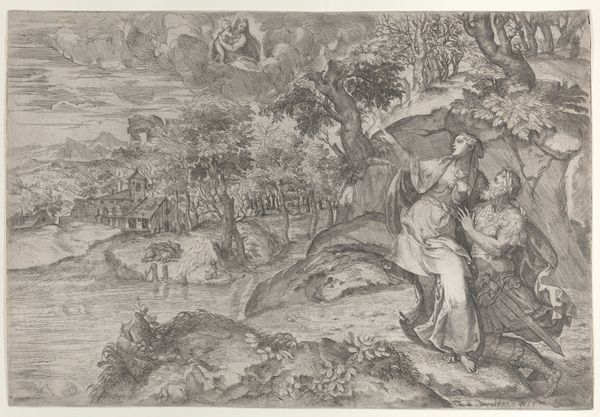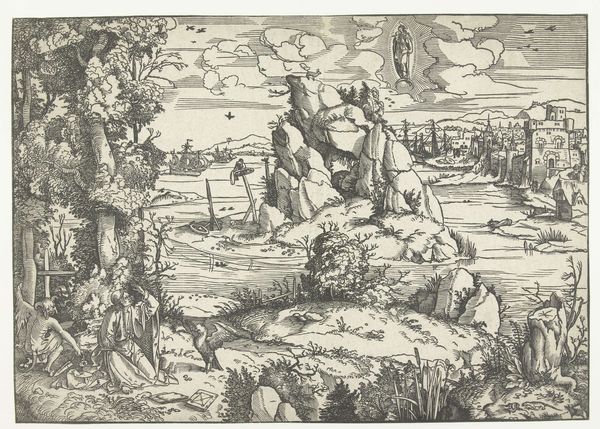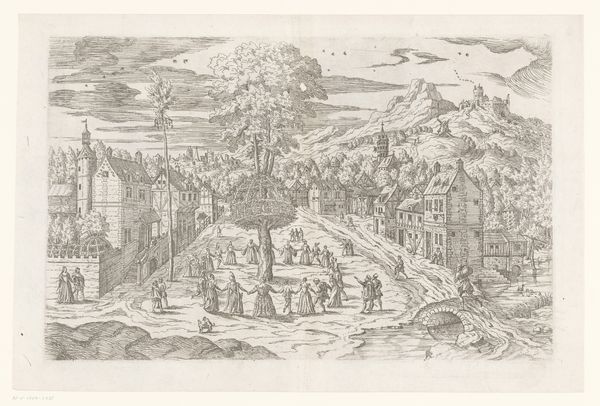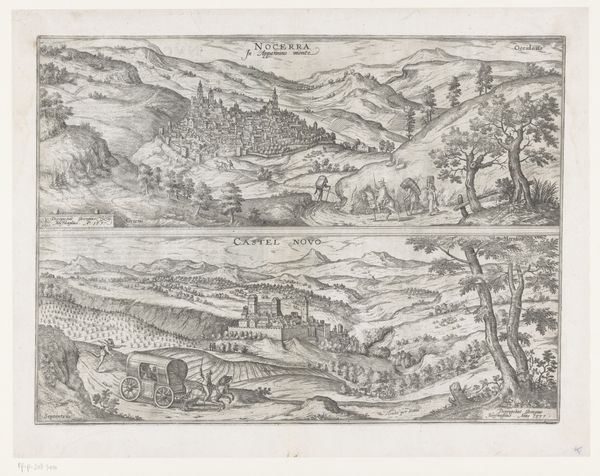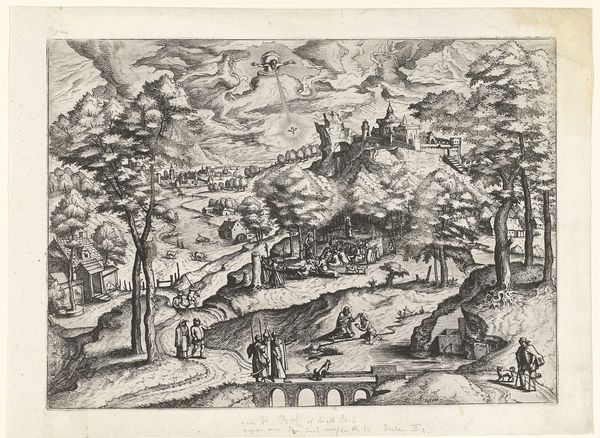
drawing, print, engraving
#
drawing
#
ink drawing
#
pen drawing
# print
#
landscape
#
figuration
#
11_renaissance
#
northern-renaissance
#
engraving
Dimensions: Sheet: 7 7/16 × 10 13/16 in. (18.9 × 27.5 cm)
Copyright: Public Domain
Curator: Matthias Zündt created this intricate engraving, "The Abduction of Hieronymus Paumgartner," sometime between 1540 and 1550. Editor: Immediately, I’m struck by the landscape. It dominates the scene and appears strangely compressed, almost as though squeezed between the earth and sky. Curator: Indeed, Zündt masterfully combines figuration with an expansive landscape. Consider that Hieronymus Paumgartner was a prominent Nuremberg patrician, essentially kidnapped and forced into marriage. This piece offers a visual commentary on power, societal constraints, and forced unions within the patriarchal structures of 16th-century Europe. Editor: The way he uses line is compelling, though. Look at how the varying densities create a sense of depth despite the relative flatness. The town in the distance versus the detail in the foreground vegetation – it guides the eye deliberately. Curator: Precisely. The details contribute to the narrative; we see armed figures abducting Paumgartner. Consider the social implications; such a forced marriage underscores women's lack of autonomy and the coercive dynamics that governed their lives. It points to systemic inequalities and the subjugation of individual will. Editor: Even the heavens seem agitated! Those swirling clouds suggest drama and imbalance, a neat trick given that they're simply rendered with clever hatching. I’m quite impressed with the pure craftsmanship here. Curator: And it goes beyond technique. What do these depictions communicate about the normalization of violence? By visually documenting this event, is Zündt complicit in perpetuating such acts, or is he offering a critical portrayal of the moral decay within the upper echelons of Nuremberg society? Editor: The artwork's success, I think, resides in how it makes you return to observe, and continuously analyze it to interpret it in its complexity. The details keep bringing me back. Curator: Yes, by examining pieces such as these through an intersectional lens, we can unveil the complex ways in which gender, class, and power intersected, shaping lived realities in Renaissance society and continuing to affect our own.
Comments
No comments
Be the first to comment and join the conversation on the ultimate creative platform.

